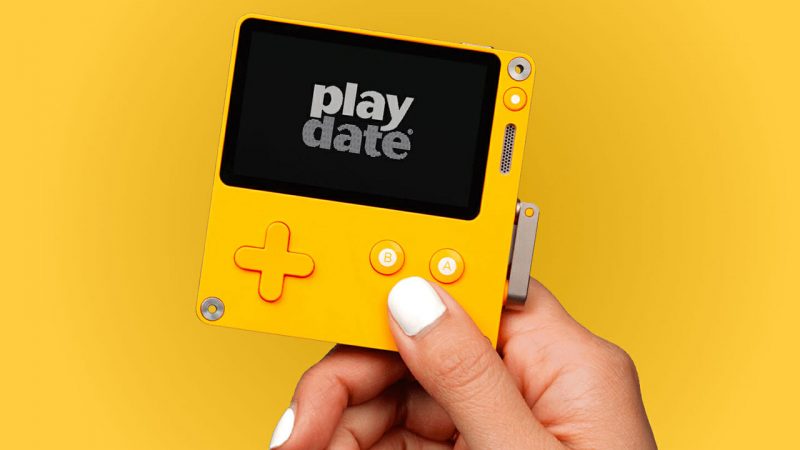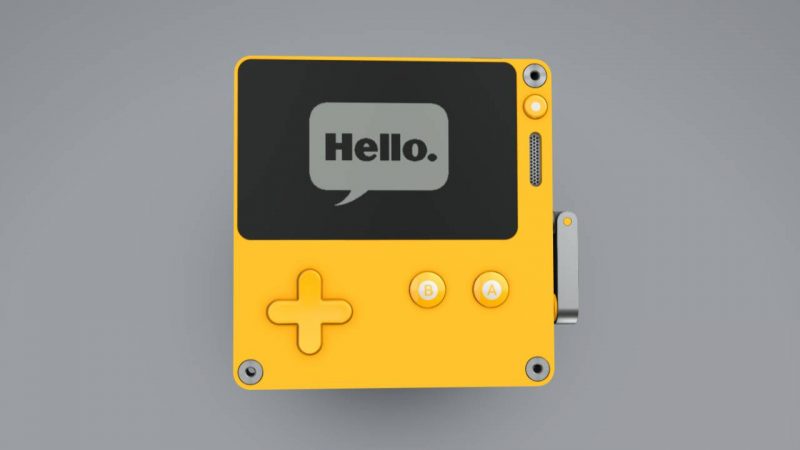From the early days of the iconic Game Boy that essentially changed the entire history of the video games industry to the modern era of the widely adored Nintendo Switch, handheld consoles have always retained their own space, separate from the rest of the market.
And while the likes of Switch do try to delve more into the home console territory, they are still mainly regarded as handheld consoles just because of the way that they are designed. However, in a world where mobile phones are already incredibly capable and the Nintendo Switch is reaching unprecedented heights, is there a place for another handheld console?
Panic, the maker of the all-new upcoming handheld console, the Playdate seems to think so. Crafted from the rainbows of marshmallow land and designed by unicorns in the clouds somewhere above Portland, Oregon, the Playdate looks like something straight out of Adventure Time. With its bright yellow color and a tiny square body, the Playdate has this enchanting aura that just pulls you towards it.
However, much like the NES Classic Mini, the Playdate’s biggest strength perhaps is its ability to capitalize on your nostalgia and throw you back to a time when things were much simpler. Do we really need to go back though, when we have the power of a billion Game Boys in our hands already? And does BMO’s little brother have what it takes to compete or is it destined to rot away in a hipster’s attic 10 years from now?
To answer that question, we need to rewind a little bit – using the crank on the Playdate. Yes, it actually has a crank, how bizarre (and cool?) is that? While it is true that the Playdate doesn’t hold a gazillion teraflops inside, it also makes itself impervious to any claims that disregard it on those grounds. The charm of the Playdate doesn’t lie within how powerful it is but in what it does.
Created by Panic, who also published the critically-acclaimed games Firewatch and Untitled Goose Game, the Playdate is being described by many as something that is ahead of its time while also somewhat living in the past. It is truly a piece of technology that has no regard for the time period it finds itself in. Even more fascinating is the way it manages to separate itself from literally everything else on the market.
With a monochrome screen that lacks any backlight, the display of the Playdate really looks like something that you would find in a modern tv show set in the 80s. Additionally, with Wi-Fi, USB, Bluetooth, and a headphone jack, it still manages to keep in touch with the essential requirements of 2020 as well.
The word essential is key here as the Playdate strips the artform of gaming down to its raw and primal form. Don’t expect to be playing Assassin’s Creed Valhalla on the Playdate then. Instead, the small display on the handheld console will mostly be used for games involving monochrome pixels that may manifest themselves in the form of stick figures or other things.
However, the fact that it isn’t trying to even go against what everyone else is doing is what makes it so compelling. According to a couple of developers that will be designing games for the Playdate, the process of making games for it requires a level of creativity that is on a completely different plane from what we are accustomed to right now.
While this does mean that the scale of most games will be limited by the hardware, it also frees up the option to think out of the box and do something extraordinary. This little piece of kit with its two buttons and a crank that can be used to interact with games in a completely new way might also push others for similar innovation as well.
In an interview with TechRadar, Steven Frank, the Co-Founder of Panic laid out his expectations from the handheld console:
“The project has grown massively in complexity over time. At first, the idea was to make a simple electronic trinket that we could give to a few dozen close friends to celebrate our company’s 20th anniversary. It somehow just kept evolving and evolving until it became a handheld game system that we were going to be selling to the general public.
I don’t want to be, like, ‘it’s not about the money!’ but in many ways it’s not about the money. At least, not entirely. Some money would be nice.
But I think in terms of this particular project at this particular time, it would do my heart a lot better to see people out there enjoying it, sharing their experiences, maybe convincing themselves to give game development a try, and have communities forming around that! If it inspires a whole generation of creators, I’d consider that a wild success.”
To facilitate the point made by Steven Frank about giving game development a try and inspiring a generation, the Playdate has been set up in a way that it acts both as a console and a learning tool. Since it is an open platform, every Playdate player can use it as a development kit and start making their own games for it.
In addition to that, the game distribution has also been left wide open meaning that anyone can publish any game for it or sideload third-party games as well. As for the delivery of the games, Panic has still remained rather tight-lipped about the matter, only saying that the games will be delivered in ‘seasons’ over your Wi-Fi with a surprise element.
However, since most of that talk is still on paper, we have to acknowledge it with a grain of salt and look at the Panic Playdate more objectively. Yes, the little pocket-sized handheld console is fascinating but at the same time, the number of instances where we have seen something being described as the next big thing only for it to fail miserably is just too high.
With a rather hefty $150 price tag for what it brings to the table, the Panic Playdate needs to be extremely special for it to be something viable for an average person.
When you can get a Nintendo Switch Lite for only $50 more with its vast library and thousands of hours of potential gameplay, why would you go for something like the Playdate the charm of which could wear off within mere days, much like the toys in your childhood? However, the fact that it is still trying to step up and challenge the status quo is still admirable and it would be fascinating to see what the future holds for the Playdate.
Furthermore, if you already don’t like the idea of a small monochrome screen and only two action buttons in 2020, then the Playdate may not be targeted towards you anyway. There are still people out there who would love to rewind time and go back to enjoying games in their purest form, right in the palm of their hands.
Additionally, the crank could also add a whole new dimension to the gameplay that we just hadn’t seen before. In a time when innovation in video games has started to dwindle down a little, things like the Playdate need to exist to keep the industry fresh.
So, whether it actually turns into the next sensation, much like the original Game Boy in the early 90s with everyone around you carrying one in their pocket or it gets buried and forgotten, much like many others before it remains to be seen.
Where the Playdate doesn’t fail though is in its design language and creativity department and other players in the industry should definitely take notice of what Panic has managed to achieve.
Playdate will ship in 2020 at USD $149 and will initially come with 12 games (Season 1), free of charge.







